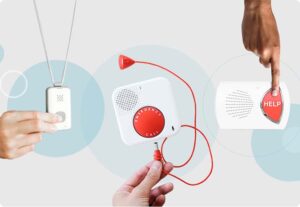What Is a Home Safety Evaluation and How Do I Do One?
SafeWise is an independent review site. We may earn money when you click links on our site. Learn how we rank and review.
A home safety evaluation is a thorough assessment of potential hazards in and around your home. Potential hazards include anything that could cause personal injury, lead to a fire or flooding in your home, or jeopardize your safety by making it easy for an intruder to enter your home.
Also called a home safety audit, a security evaluation is a great tool to discover what concrete steps you need to take so that your home is as safe as possible for everyone in your family, in any situation that arises.
You can undertake a home safety audit on your own by identifying common household hazards and checking in on them regularly. Here’s how to get started.
By signing up, you agree to our Terms and Conditions and Privacy Policy.
Break the evaluation into specific areas
With so many aspects of home safety to consider, you may wish to break up your home safety evaluation based on a specific topic, like fire safety or home security. That way you can tackle similar tasks all at once to avoid feeling overwhelmed.
You could also break up the assessment by room or based on specific needs. For example, you could assess your house or apartment before a new mom and baby come home from the hospital, or in preparation of an older relative moving in with you. From there, you can evaluate your family’s home safety plan in those specific areas.
Use our room-by-room guides to help you get started:
Aim to check everything
Ultimately, the goal of a comprehensive home safety audit is to check everything, including the walkway leading to your front door and the electrical circuits running through the walls. As you make your list of things to check, don’t discount anything—even the most mundane elements, from chimney cleanliness to plant toxicity, should be evaluated.
Your safety evaluation findings
During the process of your home safety evaluation, you will invariably find things that need repair or replacement. We advise prioritizing those into three categories: general safety at home, home security, and emergency planning.
- Safety at Home: Most accidents and injuries occur in the home. This is probably because we spend so much of our lives there and also because it’s easy to overlook one “small” thing—a loose step leading up to the front door, that nagging drip that’s actually an indication of a pipe about to burst, the lint that’s creating a fire hazard behind the dryer, and so on. Fixing these should be at the top of your to-do list.
- Home Security: Your safety audit will also highlight what you need to do in order to preemptively keep your home safe from intruders—from shoring up the locks on your doors to installing motion-sensor lighting. A comprehensive home security system will not only protect you from burglars, but can also integrate alarms for smoke, fire, and flooding.
- Emergency Plans: The next step is creating a family emergency plan for any emergency-related questions that might arise: what to do if an intruder is in your home, where to go in case of fire, how to handle the aftermath of a flood, etc.
Take the SafeWise Safety Quiz
At SafeWise, we’ve developed our own home security audit checklist, as well as smaller monthly checklists.
You may want to look at those the safety checklists now and then come back again after you’ve completed all the items from your home safety audit. Our goal is for you to be 100% safe and secure in your home.
Compare the best home security systems
Info current as of post date. Offers and availability may vary by location and are subject to change.
Full ADT disclaimer
Recent Articles




Article source here: What Is a Home Safety Evaluation and How Do I Do One?

No comments:
Post a Comment